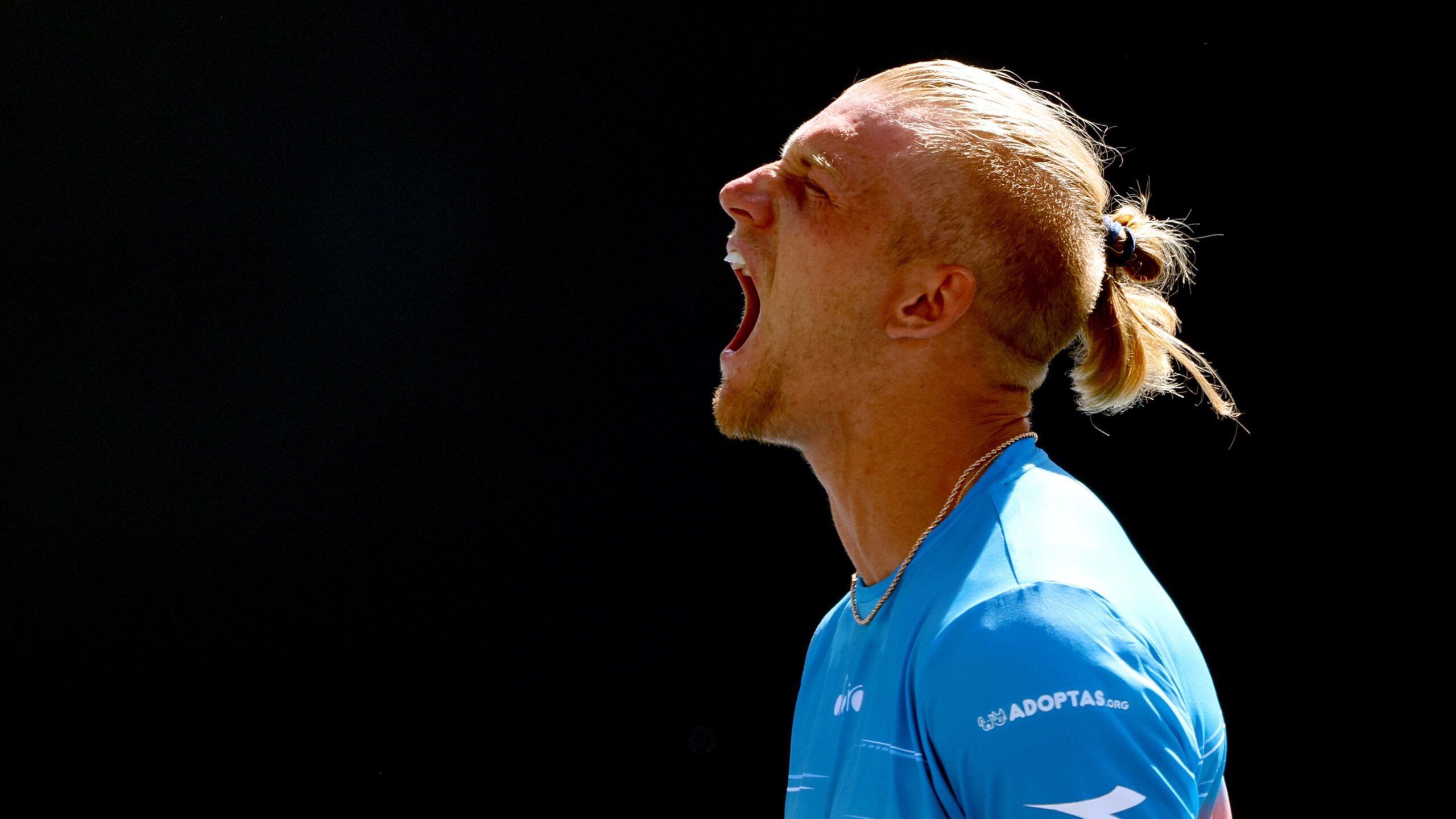NEW YORK – One day, Alexander Davidovich Fokina achieved what any tennis player striving to reach the top dreams of: to be the talk of the world.
But it wasn’t a dream. It was a nightmare.
It was his decision to throw a shot that could make him a genius or an object of ridicule. The coin landed on the wrong side and the image went viral in a register that ranged from astonishment to cruel mockery.
Yes, Davidovich Fokina went around the world with that underarm serve in the defining super tie break against Denmark’s Holger Rune in the third round of Wimbledon. This Monday, having successfully passed the first round at the US Open, the Spaniard makes it clear that the issue no longer keeps him awake at night.
“I’m not in social media and I didn’t see it. I don’t really care what people said,” said Davidovich, the 24-year-old owner of a game with a lot of potential, although not yet with all the results he could have.
8-8 in the tiebreaker.
Who expected Alejandro Davidovich Fokina to do an underarm serve? 😯#Wimbledon pic.twitter.com/2ki8QOqkXz
— Wimbledon (@Wimbledon) July 8, 2023
Davidovich Fokina doesn’t care about the “genius or ridicule” dilemma that inevitably arises when someone decides to try an underarm at the decisive moment of a match on the most coveted stage in world tennis. He was not as fortunate as Michael Chang in 1989, who was in fact twice as fortunate.
That time, the American decided to serve underarm at a critical moment in his match in the round of 16 at Roland Garros. The opponent was the gigantic Ivan Lendl. That underarm serve was not only successful, but it opened the door to victory and the title, at the age of just 17, days later.
In that sense, Chang was lucky, And he was lucky that social media didn’t exist, who knows how much he could have digested so much praise and criticism, because many saw the American’s tactical decision as barbaric. Even if it worked out well.

Every cloud has a silver lining, the saying goes, and Davidovich, a plain-spoken, straight-talking young man, grew stronger after the barrage of mockery and criticism for his Wimbledon gamble.
“In the end those matches give you an experience that will help you in the end for the following matches, tournaments. I’ll keep that, I don’t regret anything I’ve done in those matches. They are experiences that life gives you and you have to take them whether they are good or bad”.
Days after that match, the Spaniard deleted himself from all social networks, an environment in which he had not felt comfortable for some time: his last post on Instagram dates back to March 13th.
Getting off the social networks also helped him to get to know a side of himself that he was unaware of: the Alejandro Davidovich Fokina reader. He has read a lot in recent weeks and changed some habits.
“Before, for example, after getting out of bed the first thing I did was pick up my mobile phone,” he said in a recent interview with “Tennis Channel”.
“Now I think that’s not possible: I go to the bathroom, do my routines and go down to breakfast without my phone. I took off social media for two months, now I’m more at peace with the world.”
The Spaniard, who says he has recovered from his back problems, is confident about what he can do at Flushing Meadows. “The tournament is quite slow, the balls don’t last very long, they get like bears in practically two games. And that gives me more time to play my game, the slower the court, the better for me.”
“You never know when it’s going to be your time. Look at (Holger) Rune, who lost to (Roberto) Carballés today. Maybe Rune thought he was going to make the final and he lost in first…”.
“A lot of injuries are mental, the stress and all the day-to-day tension of the players. A lot of players break down because of stress,” he analysed when asked about the gruelling annual schedule on the ATP tour.
“Tennis is very fucked up, if you stop playing for a couple of weeks it’s not at the same pace as if you’re playing. It’s not like football.”
What is he missing to become one of the “very good”, which is how he defines the top of the ranking? Or is he missing nothing?
“For sure! But I think I’m on the right track, with a good level in training and tournaments. It’s just a matter of a few weeks to get my best tennis and go up.
Where does he need to put the emphasis: technical, physical, mental? No, it doesn’t go that way, says the Spaniard, who in his position of 21st in the world ranking sees closely those “very good” that he mentions.
“It’s a global thing, it’s nothing specific. When you get it, you’re going to get it. It’s not improving the forehand or something like that. It’s global. You can smell it.”









